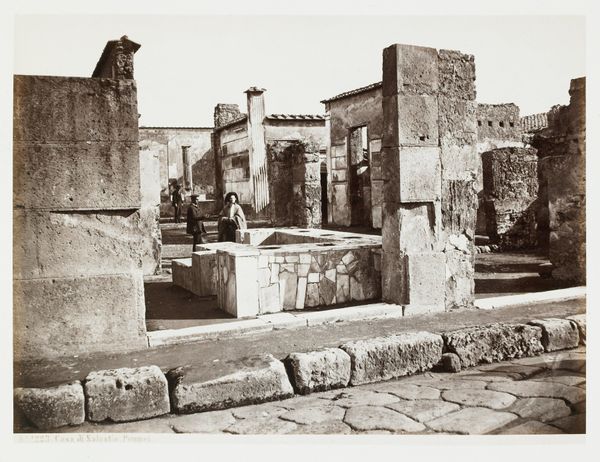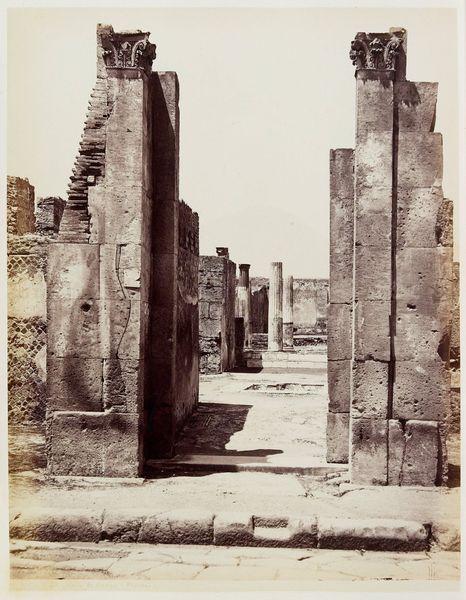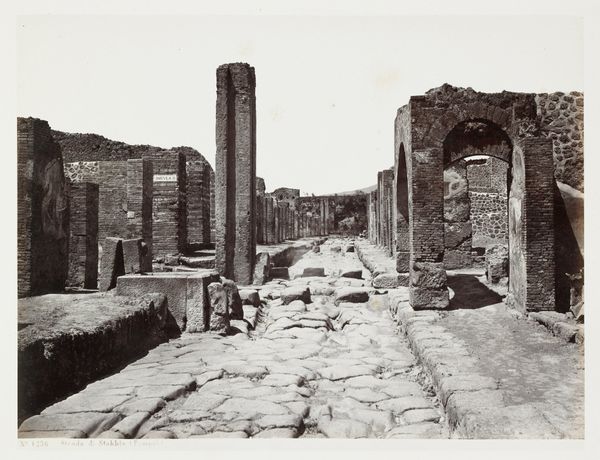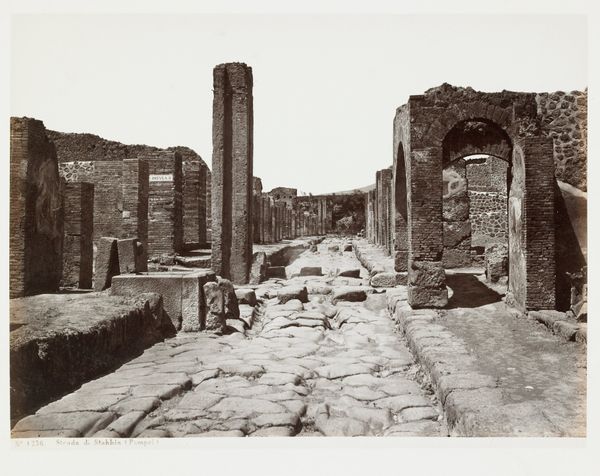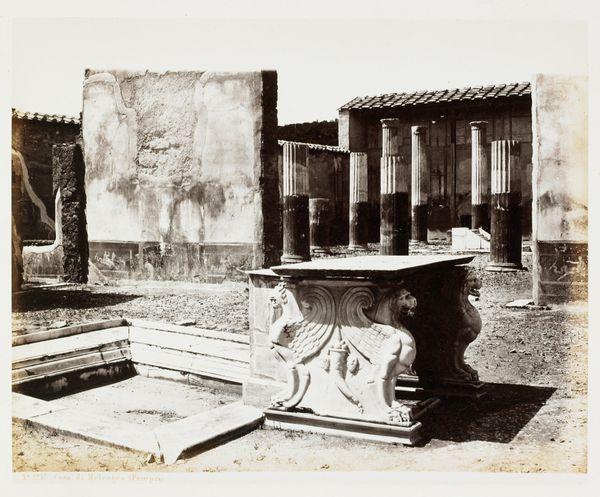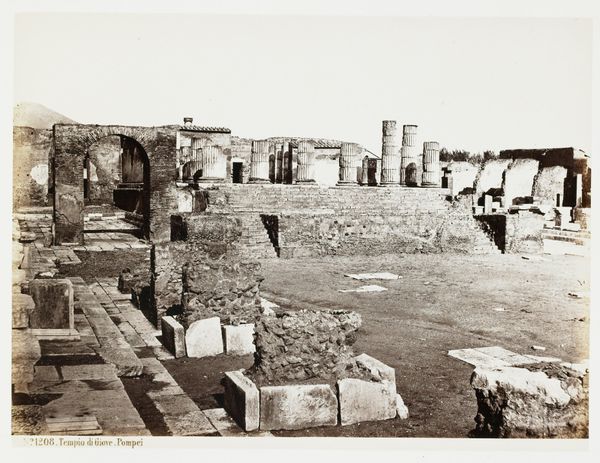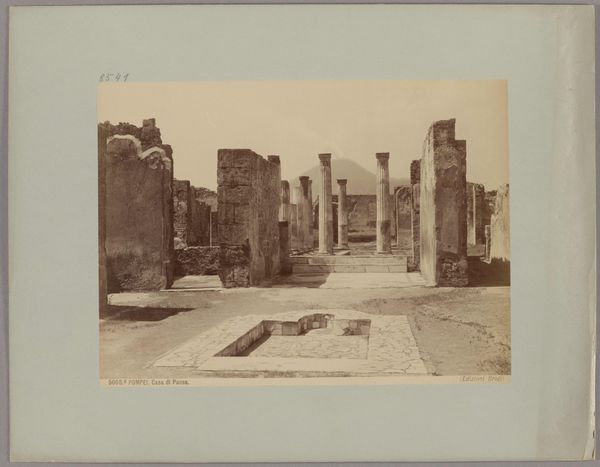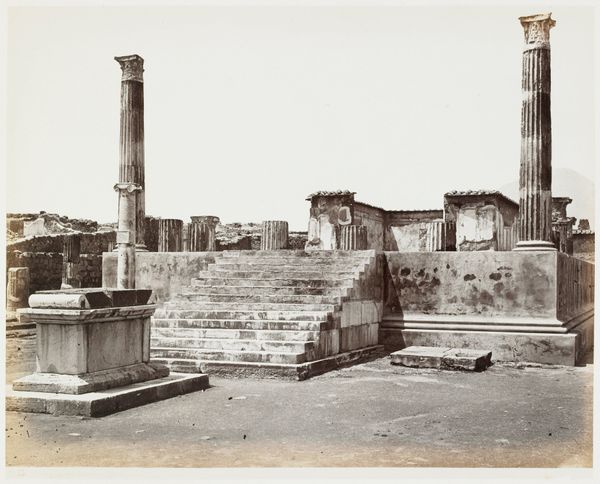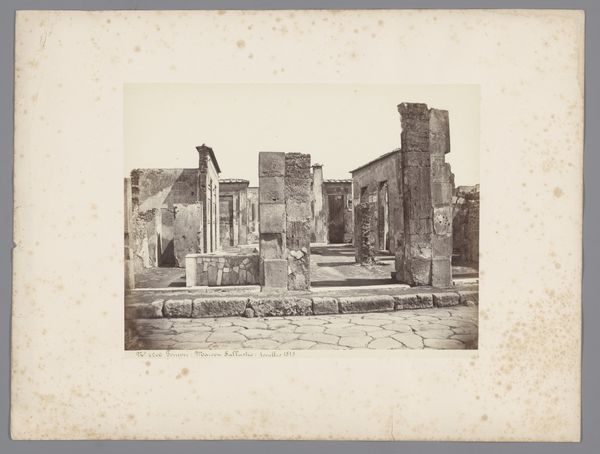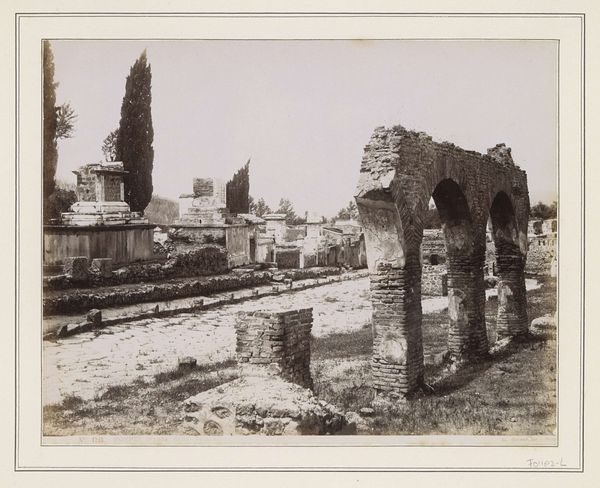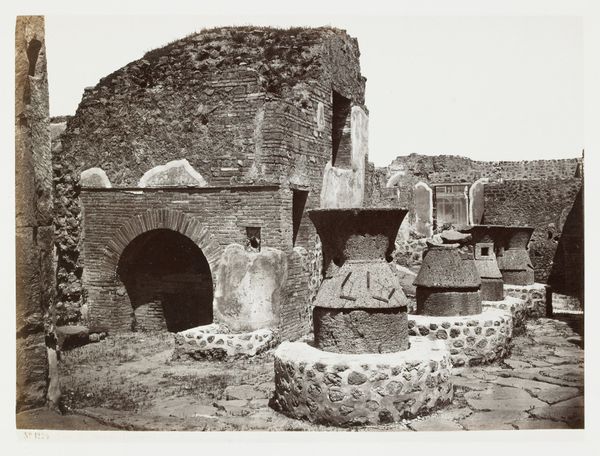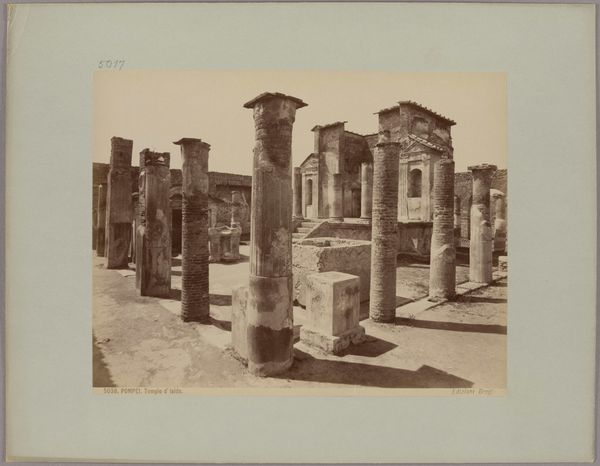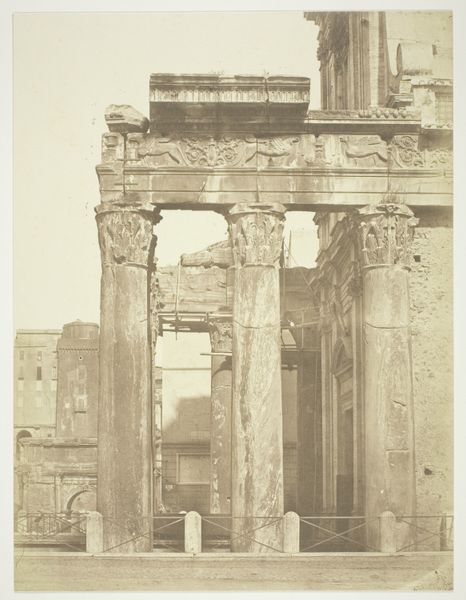
albumen-print, photography, site-specific, albumen-print
#
albumen-print
#
sculpture
#
landscape
#
photography
#
ancient-mediterranean
#
site-specific
#
italy
#
albumen-print
Dimensions: 9 x 7 in. (22.86 x 17.78 cm) (image)
Copyright: Public Domain
Curator: Immediately, I'm struck by a feeling of melancholic grandeur, almost like a ghost of an empire. Editor: Indeed. This albumen print, titled "Tempio d'Iside," captured in the 19th or early 20th century by Giorgio Sommer, depicts the Temple of Isis in Pompeii. The albumen print process involved coating paper with egg white, lending the photograph a unique texture. Curator: Texture is an interesting point. The ruins, even in photograph, exude a palpable sense of layered history, and the shadows cast across the foreground only heighten the sense of time's relentless march. What can this tell us about our relationship with cultural memory and resilience, and with deities like Isis in ancient culture? Editor: The material reality tells us plenty, though. Notice how the crumbling columns bear the brunt of centuries of neglect. The decay is part of the material story, it connects this once sacred space with the volcanic ash that buried it, to the later excavation that led Sommer to take this image in Italy. Curator: The site clearly carries strong symbols; those pillars and the visible brick underneath call to mind cycles of destruction and reconstruction – potent metaphors embedded in our psyche. The almost theatrical contrast between light and shadow creates a sort of liminal space, between reverence and ruin, making visible the power of nature’s capacity for renewal and erasure, mirrored in our own cultural narratives. Editor: It is the tangible nature of the material here, for me. The wear and tear on each individual column tells of labor and also connects to commerce, from quarrying and shipping these columns. Who had access? Who didn’t? The print offers the means to trace this historical impact. The medium itself connects the temple's historical existence to our present-day consumption and memory. Curator: It’s remarkable how a single image can act as a conduit, relaying whispers from the past, isn't it? I feel like the figure on the left of the frame adds an air of mourning—connecting ancient reverence to contemporary grief over lost ways. Editor: Definitely, and in how this particular photograph memorializes labor and the slow process of decay of once sacred objects. By turning our gaze toward the temple ruins, it invites speculation about our role in consumption, destruction, and our fleeting impact on what may persist after us.
Comments
No comments
Be the first to comment and join the conversation on the ultimate creative platform.
